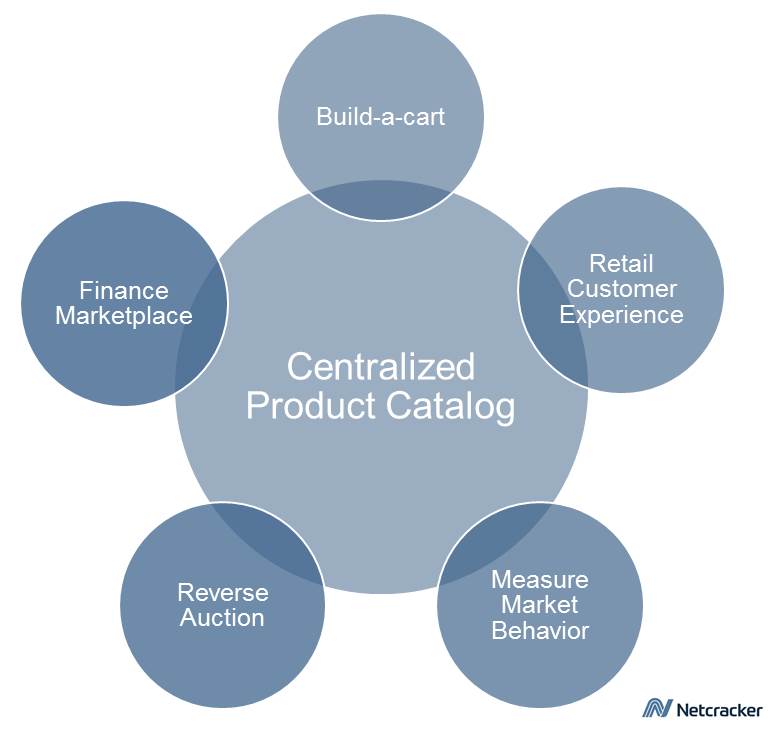How a Centralized Product Catalog is a Digital Enabler
Leveraging centralized product data is critical to competing in the market and to successful digital transformation as a whole.
A centralized product catalog may not be a novel construct, but in the massive scope and complexity of a service provider’s business, finding one fully deployed is not a given. Now that digital service providers have sharpened customers’ expectations with comparison shopping, in-store retail experiences, payment options and flexible offers, leveraging centralized product data is critical to competing in the market and to successful digital transformation as a whole. Here are five examples where a centralized product catalog plays a core role enabling digital experiences and business practices.
Build-a-Cart Online
A great digital experience starts with a useful interface for searching and browsing a catalog and building custom shopping carts with combinations of products and services. Service providers offering broadband, mobile, video, music, gaming, smart home and IoT packages can at baseline provide a flexible online shopping experience with help from a centralized product catalog.
Enhance Retail Customer Experience
Retailers are critical channel partners for service providers. Their developers want to ingest service provider catalog data and updates via API and integrate it into their customer experiences and sales processes. Product catalog flexibility and currency are increasingly important to driving customer-facing, digital retail sales processes online and in-store. As a result, integrated service fulfillment behind each product is important to automate the end-to-end process from product selection through delivery.
Measure Market Behavior
Comparing how every active product in the catalog performs over time not only provides useful demand analysis but is itself market intelligence. The ability to analyze performance data across segments and geographies is a core analytical capability that is recommended for any digital initiative. The data inherent in a product catalog and the data transactions that move in and out of it are all prime fodder for analysis to benefit pricing; inventory, vendor, and partner management; and demand across the product portfolio.
Power Reverse Auctions
A centralized product catalog provides visibility into products that are popular with customers and are sold at volume. A product catalog can power demand stimulation campaigns like reverse-auction group deals. In this viral campaign, the more people join the group, the lower the unit price becomes down to a specified goal or minimum. This is a great model for devices, accessories and special promotions on subscription services.
Host a Financing Marketplace
Facilitating financial transactions tends to be very profitable for service providers. Giving customers more ways to pay for products is typically considered a digital mandate. With a centralized product catalog, service providers can populate both in-house and partner services for leasing & financing options across many products . This is one of the building blocks for a finance marketplace which would match device and service buyers with leases, financing plans, perpetual upgrade subscriptions, warranties, insurance, protection plans and other services.
Be sure to check out how Netcracker eliminates bottlenecks in the product lifecycle with unified product management capabilities.